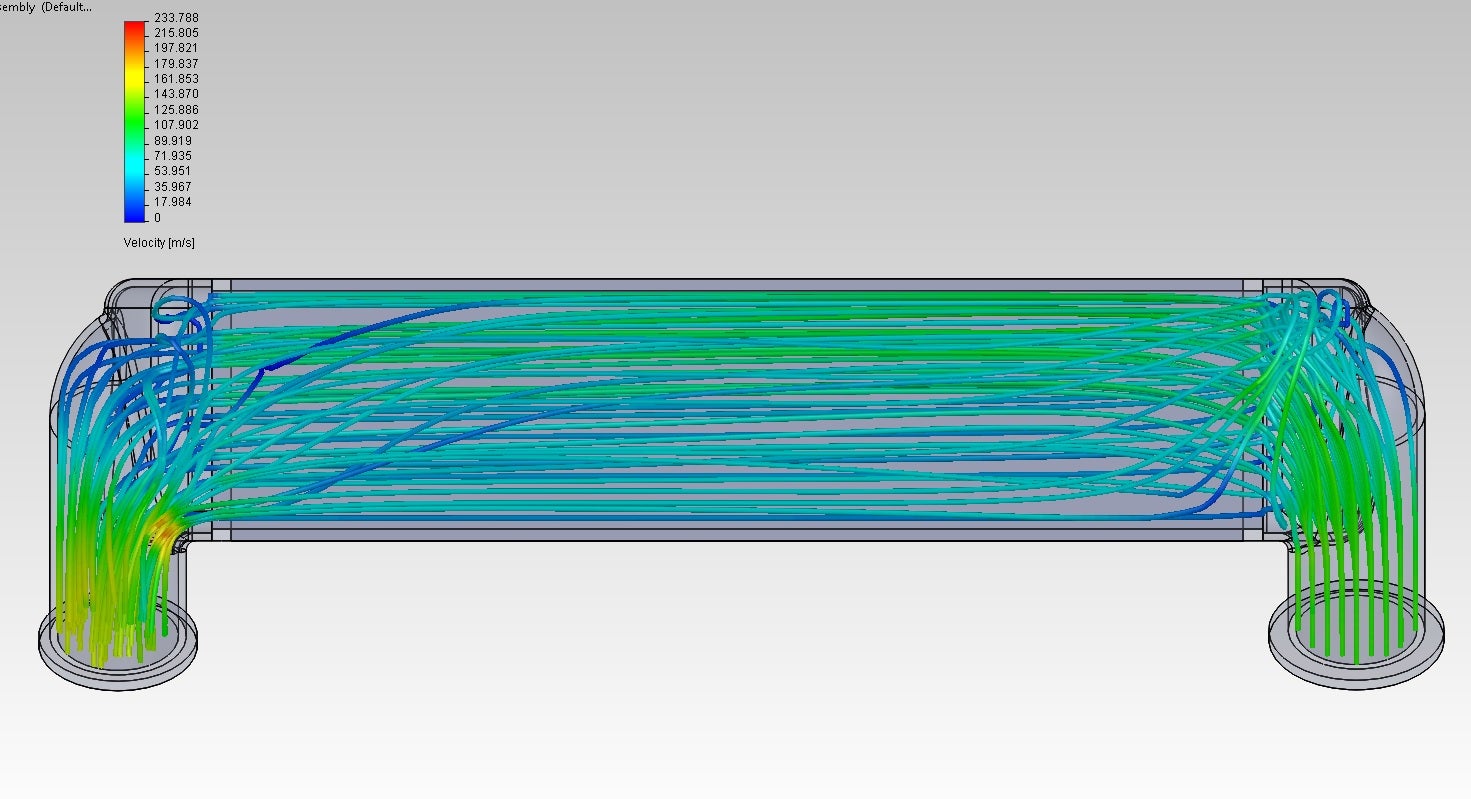
The Mustang EcoBoost Intercooler, Part 4: Final Prototype Design
Interested in picking up this awesome Mustang EcoBoost Intercooler? Check out our product page for more details!
Mishimoto Mustang EcoBoost Performance Intercooler
Prototype Modeling
Now that we had a core that was functioning to our standards, it was time to finalize our end tank design and make 3D models to reflect our plans. After some lengthy modeling work, we came up with the renders you see below!

Mishimoto prototype intercooler 3D model
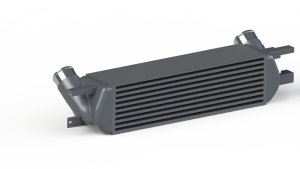
Mishimoto prototype intercooler 3D model

Mishimoto prototype intercooler 3D model
A few quick notes about this cooler! We designed this unit to fit within the same space as the stock intercooler. We designed cast-aluminum end tanks, which will be mated to the bar-and-plate core we tested during the previous (Part 3) segment of this series. We are also retaining the stock intercooler connections, which are large enough for sufficient flow to produce rather high power.
For this cooler we were concerned with pushing air to the entire thickness of the cooler. During the design of this cooler we experimented with internal end tank diverters. We've used these diverters on a few of our taller coolers to help promote airflow to the full length of the intercooler. By doing so we can take full advantage of the large core.
First, check out the dispersion of air without any internal diverter, as demonstrated by computational fluis dynamics (CFD).

CFD of air dispersion in Mishimoto prototype intercooler without a diverter
And the shot below shows the dispersion with a diverter installed.
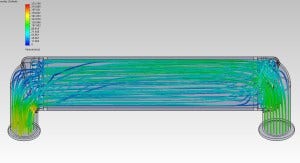
CFD of air dispersion in Mishimoto prototype intercooler with a diverter
As you can see, the diverter placement is making a fairly significant impact on the air dispersion to the rear of the cooler. We decided this was the route to go, and we will be including this feature on our next prototype. It will be very interesting to see the impact of this change on the outlet temperatures.
Here is a look at a 3D model cutaway showing the diverter.

Internal air diverter 3D model

Internal air diverter 3D model
3D-Printed Prototype
To verify fitment, we 3D-printed our end tanks to obtain the exact dimensions of our design so we could fit this to the vehicle and ensure that we were spot-on.
First, the tanks were printed.

3D-printing of prototype end tank
And the result!
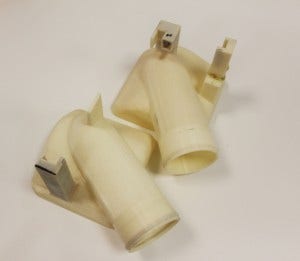
3D-printed prototype of end tanks

3D-printed prototype of end tanks

3D-printed prototype of end tanks
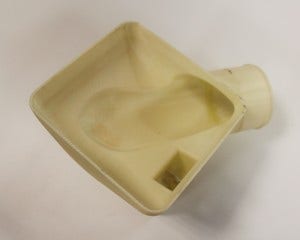
3D-printed prototype of end tank
Once printed, we attached these to a prototype core and mocked up the unit into place to confirm all our dimensions and mounting points.
Check back next time for a look at our fully functioning final prototype!
Thanks
-John




